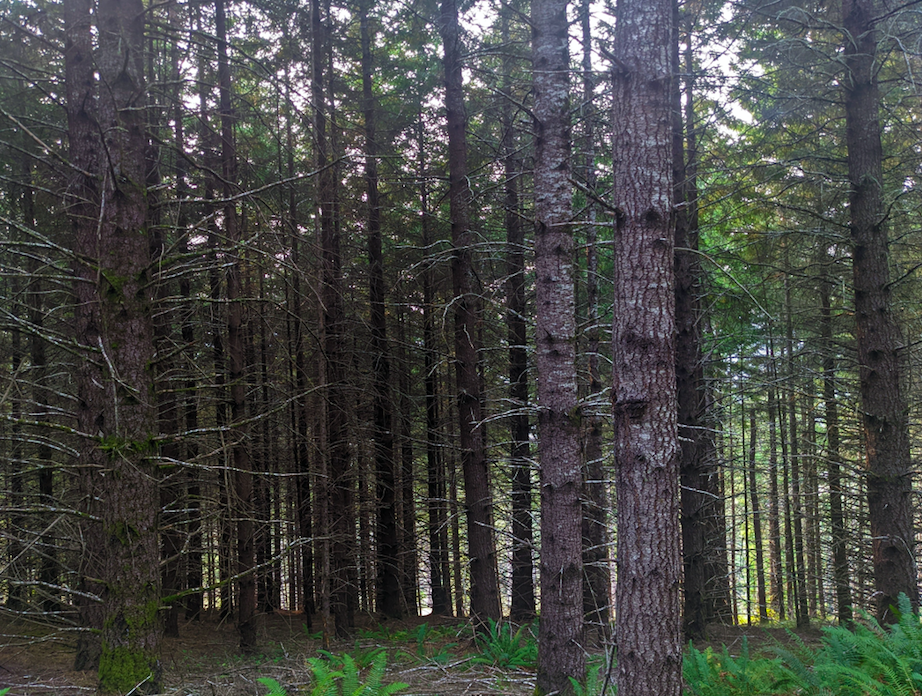
The skies over Oregon during the state's 2020 wildfires
Take a hike through the forests of the Pacific Northwest and it soon becomes apparent how centuries of mismanagement and poor wildfire prevention created a landscape littered with tinderboxes begging to ignite. Fire-starved land stretches for acres on end. Meadows are choked out by brush and encroaching pine trees. Replanted clear-cuts stand in dead row after dead row — a testament to both the ignorance and arrogance inherent in centuries of shoddy forest management. As a result, Indigenous communities are grappling with inordinately higher than average concentrations of smoke-filled air as wildfire seasons across the U.S. and Canada become more extreme.
While low-income communities of color tend to bear the brunt of air pollution in urban centers, wildfire smoke collects at higher concentrations in rural areas where it disproportionately affects Native and First Nations people. Compounding the problem: Many communities don’t have access to air filtration systems or the ability to upgrade homes and buildings. As a result, air quality improvements over the past couple of decades have largely passed by these rural communities.

It’s hard to know exactly how bad the smoke problem is in Indigenous communities due to a lack of sensors. Most monitoring is done in cities, after all. The Environmental Protection Agency (EPA) has a grant program to fund monitoring but its budget is the same as it was 20 years ago — before fire seasons hit current levels. Tribes have begun taking matters into their own hands and are installing their own low-cost sensors. “Because of that disparity in the funding, tribes are really doing what they can with the minimal support that they have,” Chris Lee, co-director of the Tribal Air Monitoring Support Center at Northern Arizona University, explained in Grist. As for the dangers to Indigenous communities, he insisted that it “is not going to be ‘if,’ it’s going to be ‘when’.”
Indeed, tribal communities are already suffering the effects of extreme levels of fine particulate matter in the air from wildfire smoke. As further explained on Grist, the Mille Lacs Band of Ojibwe in Minnesota usually gets an average of four air quality alerts per summer but last year they got 29. These alerts are only issued when the air quality index (AQI) is over 100 (for reference, “good” is below 50). On one of these days, a sensor on the reservation came back with a reading comparable to 667.2 AQI. Worse yet — the Karuk Tribe of California saw the AQI reach almost 1600 from fires in the West. For all of the data that we do have, there are many more communities who know they are being choked out by smoke but lack the information they need to protect themselves.
Even with that data, rural communities are limited as far as what they can do to safeguard their health. A lack of air conditioning means people often have to choose between sweltering indoor temperatures and smoke blowing in through open windows. High rates of asthma and other chronic illnesses are only compounded by this, likely causing a cyclical effect, and leading to high rates of hospitalization and potentially premature death.
And it’s only going to get worse. Extreme fires are expected to increase by 14 percent as of 2030 – thanks to man-made climate change and land degradation – 30 percent a decade later and by half as of 2100.
The cruel irony is that these mega-fires might not even be possible if Indigenous people were allowed to practice the traditional forest and land management that previously offered wildfire prevention to what we now call the U.S. and Canada (and much of the world) from such devastation. Prior to the European invasion, tribes used controlled burns to clear brush which can act as tinder, return nutrients to the soil, prevent crowding and over competition for nutrients and water, sustain healthy forests, maintain meadows and open grasslands for wildlife such as buffalo, and prevent wildfires.
The European American approach to wildfire prevention, on the other hand, has been an unmitigated disaster. Fire has historically been seen as a menace. Instead of adapting to the land and learning to live with good fire, settlers sought to extinguish it from the landscape entirely while drastically upending both the climate and the environment via clear-cuts and single-crop agriculture. The good news is that more scientists and politicians are finally starting to come around and see the value — nay, the necessity — of these cultural burns.
Still, as the 90-day ban on prescribed fires that was implemented back in May demonstrates, officials are skittish after the wildfires in New Mexico. But their inaction on wildfire prevention is only exacerbating the problem and allowing the acreage of fire-starved forests to grow. In the meantime, tribes are once again forced to pay the consequences of the government’s failure.
Image credits: Mark Divier via Unsplash; Riya Ann Polcastro

Riya Anne Polcastro is an author, photographer and adventurer based out of Baja California Sur, México. She enjoys writing just about anything, from gritty fiction to business and environmental issues. She is especially interested in how sustainability can be harnessed to encourage economic and environmental equity between the Global South and North. One day she hopes to travel the world with nothing but a backpack and her trusty laptop.














